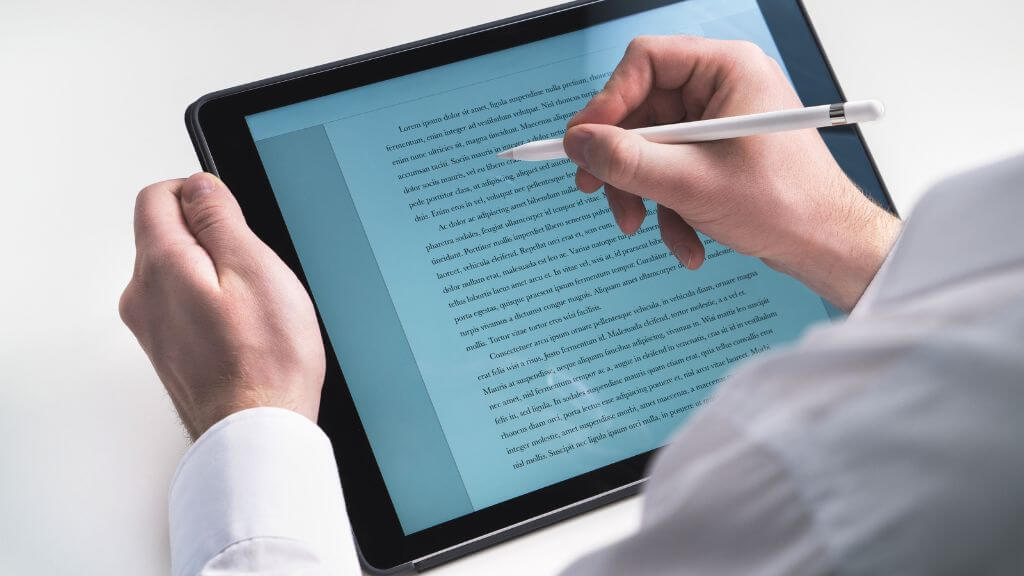Unlocking Potential: Assistive Technology for Dyslexia
Dyslexia presents slightly differently for everyone, but overall, it affects reading, writing, and language processing.
And while dyslexia was once a barrier for many people, today, technology helps bridge gaps and opens up a world of possibilities for dyslexic learners and professionals to thrive.
In this blog, we will delve deeper into assistive technology for dyslexia students and professionals and unpack some of the best tools they can use for reading and writing.
Assistive Technology Explained
Assistive technology is defined as any type of equipment or system that’s designed to maintain and improve the functional capabilities of people living with disabilities.
Assistive technology ranges from low-tech items such as pencil grips to high-tech equipment such as electric wheelchairs. Apps and software are another form of assistive technology that is used to improve the quality of life of the disabled by ensuring they have equal access to learning, employment, and lifestyle opportunities.
What is Assistive Technology for Dyslexia?
Assistive technology for dyslexia refers to a range of tools and support applications that are designed to support those with learning disabilities that impact their reading, writing, and language processing capabilities.
Some of the main forms of assistive technology for dyslexia include:
- Text-to-speech software. Also known as TTS, this software converts written text into spoken words, allowing someone with dyslexia to listen to written content instead of having to read it. This can reduce reading fatigue and improve reading comprehension.
- Speech-to-text software. With STT, individuals with dyslexia are able to speak their thoughts and ideas, which will then be converted to text. STT makes writing tasks far easier.
- Word prediction software. As a user types, word prediction software will suggest words and phrases, aiding with spelling and word recognition, and speeding up the typing process.
- Dyslexia-friendly fonts & web browsers. Some fonts have been specifically designed to be more readable for people living with dyslexia. Dyslexia-friendly fonts reduce visual confusion and improve readability. There are also dyslexia-friendly web browsers that make it possible to customize background colors, text size, and fonts.
- Optical character recognition. OCR technology was designed to convert printed text into digital text, making it possible for individuals with dyslexia to access written content in electronic formats that can be read aloud by TTS software. This includes document formats such as PDFs.
- Note-taking software. To make it easier to organize and summarize content during lectures and reading sessions note-taking software is a popular type of assistive technology for dyslexia students.
- Reading pens and digital highlighters. These tools can scan printed text and provide instant translations and definitions. Some also have read-aloud capabilities, which can further assist dyslexic people.
Remediation vs. Compensation Technology
Choosing assistive technology for dyslexia needs to be based on an individual’s specific support requirements. Too much support or even too little can lead to frustration, which is why the distinction between remediation and compensation technology matters.
Remediation for reading and writing means someone still engages with written text, but they require support through technology.
Compensation for reading and writing requires students to still construct and interpret text by engaging in oral language. This means that assistive technology that focuses on listening and speaking is used.
While some students and professionals may only require remediation or compensation technology, others require a combination of both depending on the severity of dyslexia.
What to Consider Before You Purchase Assistive Technology
There are several things to consider before you choose to invest in assistive technology for dyslexia.
- Individual requirements. Someone’s unique strengths and challenges are one of the first considerations. Where are the areas where they need support?
- Compatibility and accessibility. Next, consider the device and operating system preferences of the person in question. You also want to make sure the software or tools meet the necessary accessibility standards and support alternative input methods.
- Interface. The interface of your chosen tool or software platform should be intuitive and user-friendly, making it easy for someone to navigate.
- Tool integrations. Next, consider how well a particular type of assistive technology can be integrated with any existing tools someone currently uses.
- Customization options. The more customization options, the better, as this will further personalize and amplify the user experience.
- Learning curve. How long would it take for a user to learn how to use a particular tool or software platform? A steep learning curve could result in frustration and demotivation.
- Cost. How much are you willing to spend on assistive technology for dyslexia? Make sure that the chosen solution fits in with your budget.
- Reviews. Before investing in any assistive technology, take the time to read through a few reviews and recommendations to ensure you’re making the best possible choice.
- Support. The final factor to consider is the support that’s available. How much documentation is available to assist with onboarding and is customer support available?
By considering these factors, you are one step closer to selecting the right type of assistive technology for your needs or those of your child.
The Best Assistive Technology for Dyslexia in 2025
We can now delve into a few recommendations for assistive technology for dyslexia students and professionals.
Reading Tools for Dyslexia

Learning Ally
Available for web, IOS, and Android, Learning Ally is a digital library with over 80,000 audiobooks, allowing people with dyslexia to follow along with text as they’re reading. A Learning Ally membership gives learners and professionals access to reading and learning material in a format that’s easier to digest.
Voice Dream Reader
Available for IOS and Android, Voice Dream Reader is one of the most popular apps in the text-to-speech space. The app makes it possible to take notes, email, highlight text, and more. Users can even alter fonts, colors, and line spacing, enhancing the reading experience for those with dyslexia.
Speechify
Users with an IOS device as well as those who use Chrome can benefit from Speechify. With Speechify, you can scan books, import PDFs, and sync reading material across all devices. But, most importantly, Speechify converts text to speech using the latest AI technology.
Capti Voice
This tool is capable of improving a student’s reading with evidence-based solutions. Capti Voice solutions make it possible to listen to eBooks, web pages, and documents and support foundation skills and reading comprehension with the help of artificial intelligence.
Bookshare
Another web-based tool that comes highly recommended is Bookshare, a government-funded program that gives people free access to eBooks and other digital text. It should be noted that you will need to provide proof of disability in order to use this digital library. You can also use a TTS tool to have the text read out loud to you.
Speech Central
The final tool on this list is one of the leading text-to-speech apps available today. Once installed, users can listen to text, web pages, documents, and eBooks with ease. The customization options are another standout feature as they truly personalize the user experience.
Writing Tools for Dyslexia

Co:Writer
This is one of the best writing tools for people living with dyslexia and is available for web and IOS. Co:Writer suggests words and phrases as a user types and can recognize phonetic misspellings, further improving the writing experience. The app also automatically syncs with Google Docs, Gmail, and other extensions.
Grammarly
Grammarly is a free and paid tool that’s used by professionals and students across the globe. The platform suggests spelling and grammatical changes to improve anyone’s writing. It can even help you reword and simplify sentences to produce a better final draft.
VoiceIn Plus
Adding this Chrome extension to your browser makes it easier to take notes and develop text using your voice. It’s fully compatible with Google Docs and Microsoft Word too.
ProWritingAid
Similar to Grammarly, ProWritingAid is a grammar and spelling checker for Microsoft Word. This tool was designed to take the hassle and stress out of proofreading, giving the user the chance to focus on being creative instead.
Read & Write for Google Chrome
This free extension is a big hit among students and younger children. Features include a screen mask, which ensures the reader is only focusing on one line of text at a time, as well as simplify, which helps summarize complex language. There is also talk and type, which is a speech-to-text feature that aids in the writing process.
Screen Readers for Dyslexia

ClaroRead
This comprehensive screen reader is ideal for dyslexic students because it offers text-to-speech functionality, color overlays that reduce visual stress, and word prediction. Users can also adjust font styles and spacing to improve the reading experience.
NaturalReader
If it’s user-friendliness that you value, NaturalReader is a great option as a screen reader for dyslexia. Users can listen to text in various formats while adjusting voice speed, fonts, and colors for comfort. The natural-sounding voices also make the text sound less robotic.
NVDA
NonVisual Desktop Access is a free, open-source screen reader that’s compatible with the Windows operating system. It’s one of the most cost-effective options and offers basic text-to-speech functionality.
Apple VoiceOver
For users with Apple devices, there is Apple VoiceOver. This built-in screen reader is another tool that’s designed to support dyslexic users through text-to-speech functionality as well as customizable voice settings, and even Braille display support.
Final Words
With so many assistive technology options available for students and adults living with dyslexia, this learning disability no longer needs to prevent people from experiencing equal reading and writing experiences online.
Just be sure to carefully consider a user’s support requirements before deciding on specific tools and software.
FAQs
What assistive technology does a student use for dyslexia?
Students with dyslexia have a variety of assistive technology options available to them. Speech-to-text, text-to-speech, and screen readers are the most popular tools as they are easy to use and compatible with a wide selection of devices.


